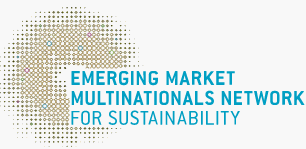5 Key Points in the Pathway to Carbon Neutral Enterprises
2022-02-11GoldenBee责任编辑0

2021 marked the start of China's 14th Five-Year Plan, and it is also the first year of carbon neutrality in China. After the Working Guidance For Carbon Dioxide Peaking And Carbon Neutrality In Full And Faithful Implementation Of The New Development Philosophy (the Guidance) was issued by the Communist Party of China Central Committee and the State Council on October 24, 2021, a series of policies have been issued.
Under the guidance of top-level design, implementation plans for key sectors such as energy, industry, construction, transportation and coal, power, steel, cement and other key industries will be released. Together with technology, carbon sink, fiscal taxation, finance and other measures, a "1+N" policy framework will be formed to achieve carbon peaking and carbon neutrality. The Guidance is the core of this "1+N" framework.
On December 30, 2021, the State-owned Assets Supervision and Administration Commission of the State Council (SASAC) compiled and distributed the Guiding Opinions On Promoting the High-quality Development Of Central State-owned Enterprises To Achieve Carbon Peaking and Carbon Neutrality, which proposed the carbon peaking and carbon neutrality targets and required central SOEs to fully integrate the targets into the mid-and long-term development plans.
At present, the government attaches unprecedented importance to the carbon peaking and carbon neutrality. The challenges and opportunities for enterprises in this regard are also unprecedented.
According to the estimation of the National Bureau of Statistics and other departments, China still faces severe challenges to fully realize its pledges to peak carbon dioxide emissions by 2030 and achieve carbon neutrality by 2060 (the "30·60" goal), among which carbon emission reduction and carbon neutrality of key carbon emission industries is crucial.
It is urgent to establish the strategic path towards carbon neutral enterprises. In view of the difficulties in implementation, the author believes that to establish an efficient and complete carbon neutral system, enterprises should firmly grasp the FIVE key points, find the path to overcome the difficulties, build management and incentive systems targeting the difficulties of carbon neutrality at each step, and form a sound mechanism of positive feedback.
01
As the premise of carbon neutrality, the accurate division of carbon emission responsibility poses a severe challenge to enterprises' technical standards and consciousness to claim responsibility.
Enterprises should first define the technical scope of their own carbon emission responsibility based on relevant international standards and local requirements, and establish the full-cycle carbon footprint of their products.
In addition, due to the weak performance effect of carbon neutrality in the short term and the lack of clear boundaries of responsibility, administrative assignment and enterprise consciousness actually play an important role in the process of confirming carbon neutrality responsibility. Enterprises should consciously put responsibility first, incorporate climate change risk response into their consistent tasks, and actively take responsibility for carbon emission reduction. While clarifying the main responsibility for carbon emission reduction, enterprises should unit its upstream and downstream suppliers to reduce emissions and achieve carbon neutrality along the supply chain.
02
Fully stimulate the motivation on carbon emission reduction within enterprises.
Facing the inevitable requirement of climate change on carbon reduction, enterprises should gradually optimize management and evaluation index, transit to carbon assessment, and establish incentive and constraint mechanism. By carrying out the carbon performance assessment from low carbon technology R&D, product design, operation management and supply chain management, they can fully mobilize employees to participate in the carbon reduction of the business self and along the supply chain, and meanwhile increase business revenue. For example, they can take measures, such as to tie the promotion and salary of employees to the carbon emission reduction in the SOEs, and tie the salary to the low-carbon profit gained by carbon emission reduction in private enterprises.
03
Make appropriate use of carbon offsets and focus on developing core technologies for carbon reduction.
Low-carbon transformation is the only way for traditional industries. Enterprises relying on non-renewable resources such as oil and coal will gradually lose their market share, while new energy enterprises will become the mainstream in the future. Photovoltaic power generation, hydrogen energy production, nuclear energy application and other fields will become the turning point of industry transformation.
Traditional energy enterprises should take carbon neutrality as an opportunity to increase R&D and investment in processes and technologies around their core businesses, expand low-carbon transformation solutions, ensure continuous innovation and upgrading of technologies, and avoid the "pseudo low-carbon transformation" that blindly relies on carbon offsets.
04
Improve the carbon emission disclosure system.
Enterprises should first strengthen their awareness of the necessity of carbon disclosure. They should systematically analyze the risks and opportunities brought about by climate change, and take the initiative to include carbon disclosure into their core development strategy.
The content and form of disclosure can refer to the international standards and the disclosure methods of leading enterprises, and follow the relevant policies of China to ensure compliance, timeliness and reliability.
In addition, enterprises can gradually establish an internal carbon disclosure supervision system, and form an effective supervision and promotion mechanism together with government, industry and third-party assurance institutions.
05
Strengthen corporate resilience and establish "mutually symbiotic and beneficial" enterprise ecology.
Different from the traditional "shareholder first" mode for the pure pursuit of short-term economic interests, in the context of the "30·60" goal, enterprises should pay more attention to non-economic interests, set up long-term value guidance, take the initiative to fulfill social responsibility, establish low-carbon oriented mission, vision and values, further forming the mutually symbiotic and beneficial enterprise ecology.
On the basis of the FIVE key points, the whole process of building carbon neutral enterprises can be divided into five stages: commitment of carbon neutrality, reduction of carbon emission, offsets of carbon emission, communication of carbon neutrality, stimulation of carbon neutrality, so as to establish the carbon neutrality management and incentive model (CROCS model) suitable for Chinese enterprises.
By using the CROCS model, enterprises can better define the overall framework of their carbon neutrality efforts, and firmly grasp the key points to promote the high-quality development.
Zheng Huijin, Jia Ming, School of Management, Institute of High-quality Corporate Development(IHCD), Northwestern Polytechnical University
Source: National Business Daily
Edited by GoldenBee
Best Practices
- The 100-year brand — Air Liquide also has a sense of juvenile
- Beijing Public Transportation Corporation: Developing green transportation to build a harmonious and livable capital
- CGN: Building a modern factory in barren deserts and developing a new win-win cooperation model along “Belt and Road”
Upcoming Event

All the materials on the site “Source: XXX (not from this site)” have been reprinted from other media. They do not imply the agreement by the site.
All the materials with “Source: CSR-China Website” are the copyright of CSR-China Website. None of them may be used in any form or by any means without permission from CSR-China Website.
GoldenBee Official WeChat
Copyright © Csr-china.net All Right Reserved.
京ICP备19010813号










